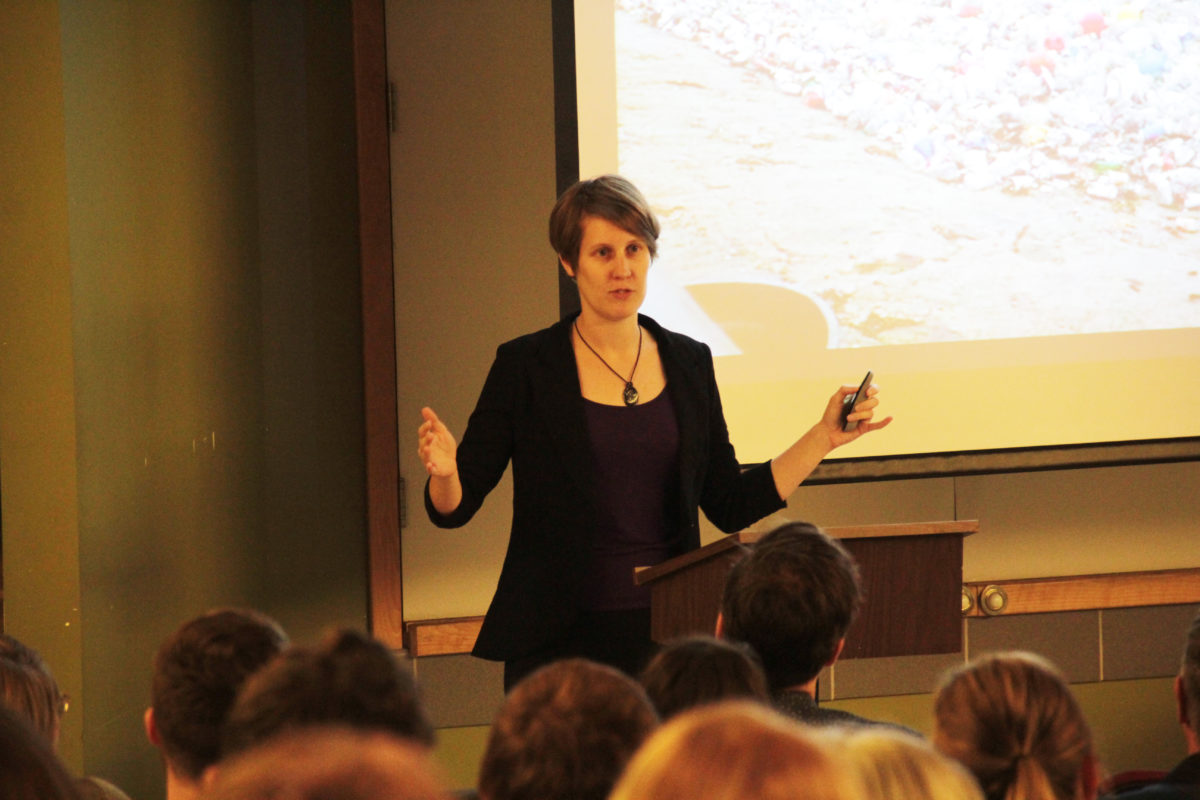You’ve heard about garbage island, right? That pile of discarded plastic and waste the size of Texas hanging out in the ocean? It’s the pile of garbage so famous it’s made headlines in the New York Times and other leading news publications. But did you know absolutely no one can find it, not even Google Earth?
Kim De Wolff explained this is because this mythical island of trash is more of a “plastic soup” during her lecture at St. Thomas University on Nov. 4.
De Wolff, a postdoctoral researcher at the University of California Merced campus, visited the Eastern garbage patch herself recently on a research trip. With a group of advocates and scientists, funded by a non-profit organization, she took samples and photos to further her research.
While this plastic soup is not a physical island you can walk on, or even a visible mass of any sort, it’s still a garbage patch that is growing. De Wolff said the garbage patch is caused by plastic debris making its way through water supplies into the ocean. Currents carry the plastic into ocean eddies where the debris settles and accumulates.
“Though we knew it setting out, we knew it wasn’t an island, we were all secretly still hoping we would be the ones to find it,” said De Wolff. “Even seeing this plastic soup ourselves didn’t override that powerful desire to arrive somewhere spectacular.”
She said the biggest problem when it comes to these garbage patches is the perspectives of certain actors involved. She explained scientists are frustrated with the public’s inaccurate knowledge and are focused on disproving the myth of garbage island.
Advocates, on the other hand, want the public to know the garbage island may not be real, but there’s still the real problem of plastic soup that needs to be dealt with. Entrepreneurs even view the island as an opportunity for building materials where they could simultaneously clean the oceans and profit from it.
De Wolff said from a science and technologies perspective, the real problem is knowledge of the situation is entangled with the amount of care the public will have for plastic pollution.
“We can have a world where A: The public cares about plastic pollution but believes it is, or should be, or wants to build a giant floating plastic island,” said De Wolff. “Or [B] we could have a world where the public knows trash island is a myth, but doesn’t care at all.”
These entanglements and perspectives also lead to an even larger negative impact, said De Wolff. While the public and even private industries are coming up with solutions for the trash island, none of them are realistic or apply to the actual situation.
People presented solutions for a plastic island, or even just general floating debris. Some suggest it be vacuumed out of the ocean and recycled. Others suggested the island be put to other uses, such as an artificial habitat for polar bears.
Netherlands-based architecture firm WHIM has even suggested building on the island and making it a habitable park for people. When they discovered the debris was more of a plastic soup than an island, they argued the plastic island should be built anyways. They currently have a GoFundMe campaign attempting to raise funds to make the plastic island a reality.
While the island not being a physical mass certainly puts a dent into these plans, De Wolff said there’s more to these proposed solutions that’s not being considered.
“Development plans also preclude other kinds of care such as making less plastic, or maybe legislating reusable bags or containers instead of disposable ones.”
Ultimately, De Wolff said even with tensions being raised between the differing perspectives, there’s currently no right answer to the solution. She said the situation is one where you must consider the answer as “always better for what and better for who.”
Despite the long list of problems and tensions being raised around the problem of plastic pollution, there’s a certain magic to the myth of an island made of trash according to De Wolff.
“As the island moves from presence to absence … It really demonstrates the enduring power and even a generating potential that it could really be made. Not only of plastics but of missing things, more generally. This is a power that might even bring absences into being, in physical, tangible ways.”

